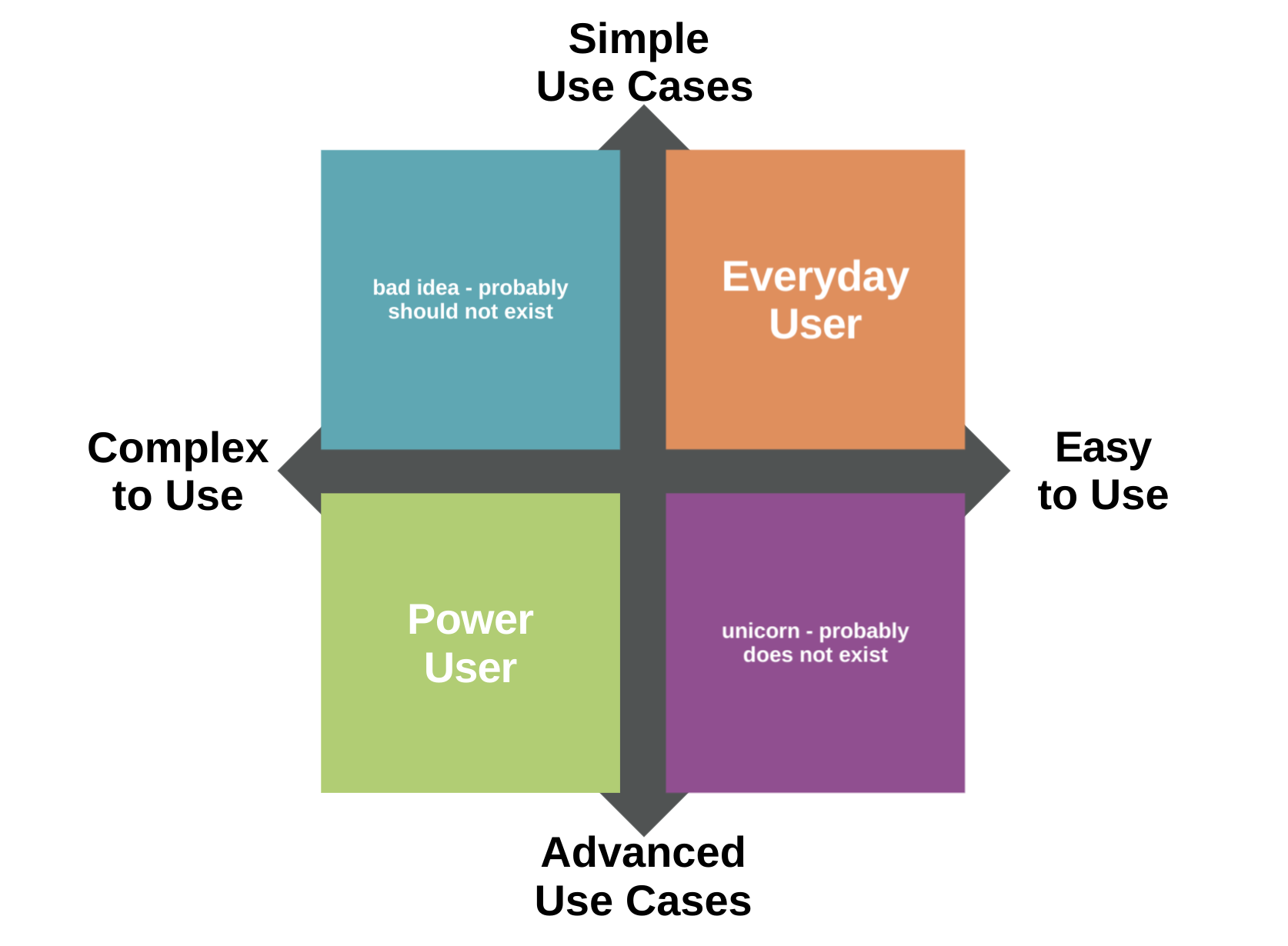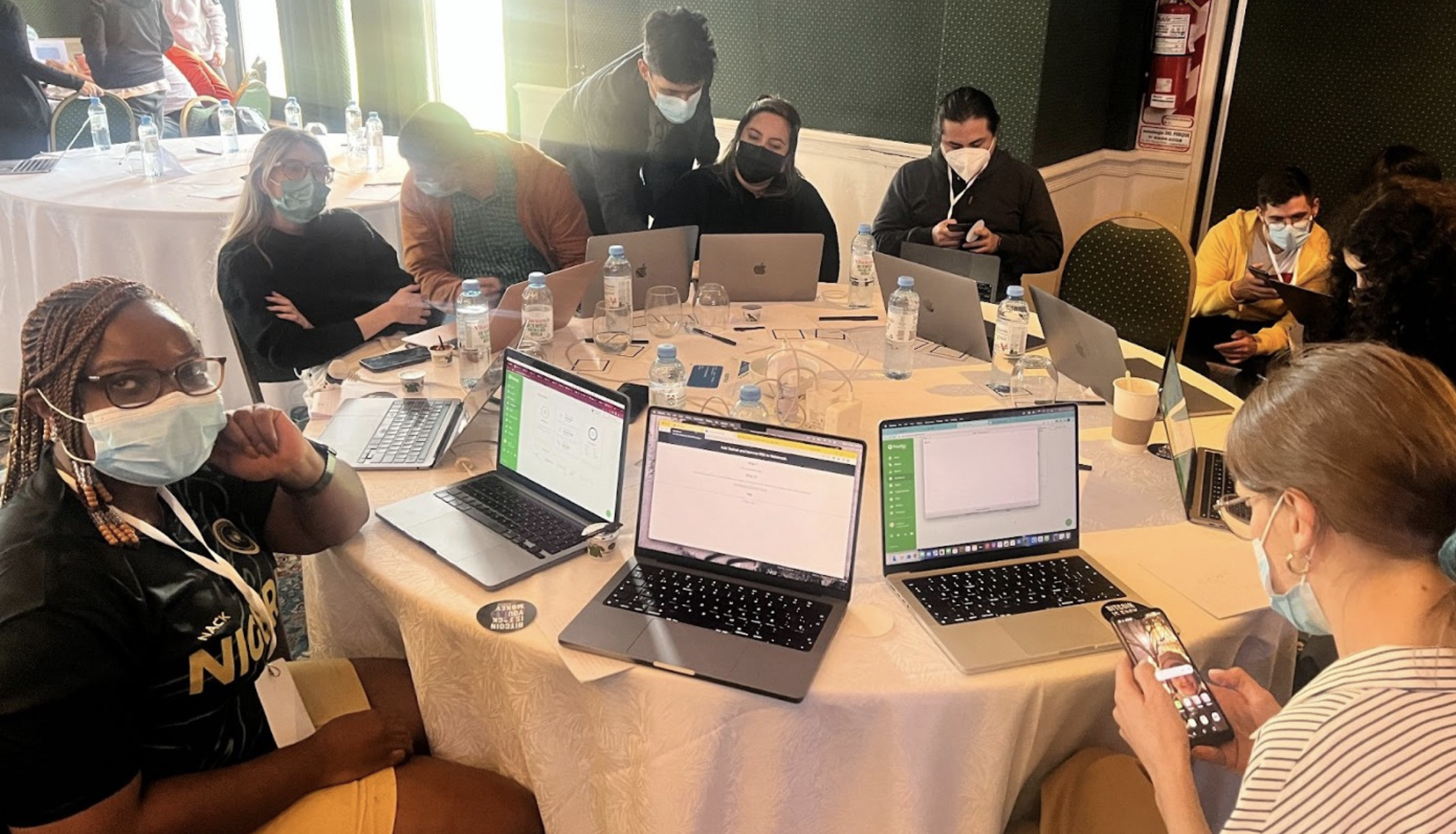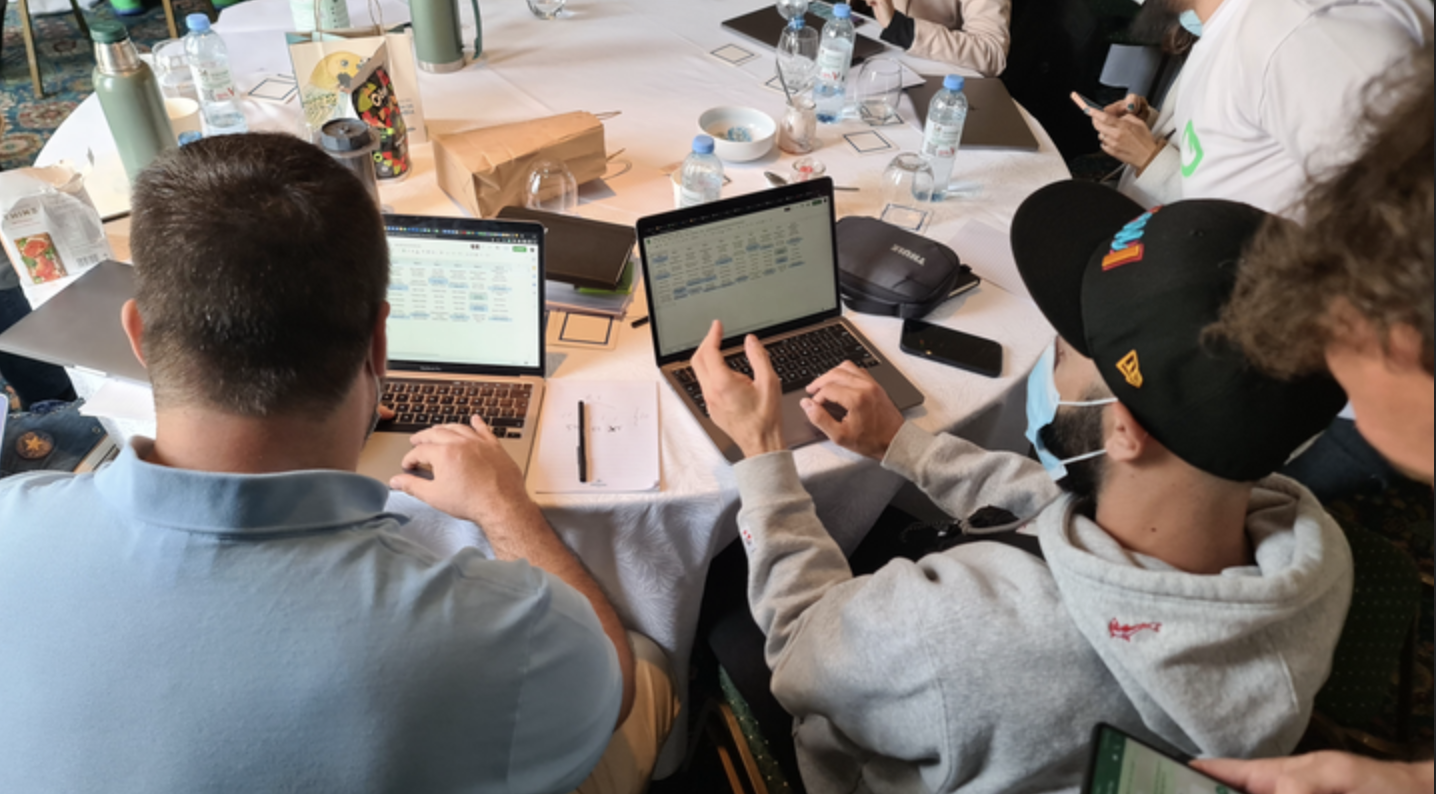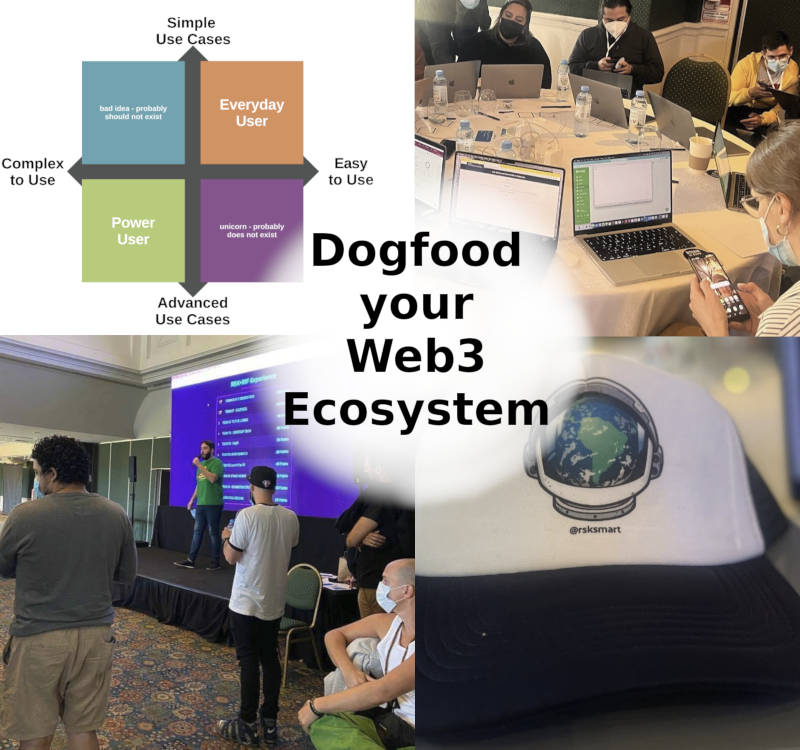Dogfood your Web3 Ecosystem
Dogfooding is the process of using your own product. The process is about trial, but the good stuff is in what you learn from it… and use that to figure out how to improve the product.
 Who does the web3 ecosystem serve? Power users are covered, for sure. Everyday users, not so much - they usually have to contend with the top-left quadrant.
Who does the web3 ecosystem serve? Power users are covered, for sure. Everyday users, not so much - they usually have to contend with the top-left quadrant.
The web3 ecosystem can be daunting for the everyday user, and that is precisely the point we wanted to address! How can we make it less so? Put another way: How to make the web3 ecosystem accessible for the everyday user?
To answer this question, we needed to dogfood our ecosystem!
Why the ecosystem though, and not just the core product?
- Technical reason: RSK is a blockchain that has been live for multiple years, and has been stable and dependable throughout.
- Commercial reason: The inherent nature of a B2B2C model is that end users will mostly interact with products built by partners in the ecosystem, not directly with the blockchain itself.
Activities Day permalink
IOV labs met in person in Buenos Aires last week for an organisation-wide get together plus strategy sessions. Part of the program was the RSK+RIF Activities Day. The idea was for everyone in the organisation to use IOV’s own products, plus 3rd party products built by partners: RSK’s web3 ecosystem.
 RSK+RIF Activities Day in action.
RSK+RIF Activities Day in action.
This was organised as a series of sequential activities that began with creating a wallet, all the way through interacting with the various businesses that are live in the RSK+RIF ecosystem. Over a hundred people were split into teams, where everyone in the team had to complete the task in order to progress to the next activity. Just to make things a bit more interesting, there were also easter eggs to find; and even a points system for the teams with a leaderboard on display on stage.
Preparation permalink
Preparing the activities and executing them was a big challenge in itself.
 The “experts” heads down in preparation for the RSK+RIF Activities Day.
The “experts” heads down in preparation for the RSK+RIF Activities Day.
Firstly, the challenges themselves needed to be scoped out and defined. What were participants expected to do? What could go wrong in a task, and how to help/ prevent these outcomes? How would participants be evaluated upon completion?
Doing a bunch of difficult tasks for the first time, with new technologies and new products, requires a lot of mental effort. Getting everyone through it, and remaining engaged throughout (for about 6 hours), is obviously a big challenge. This is why we chose to do it in teams, and to make it competitive through gamification - to foster collaboration and higher engagement.
Since there was a mixture of skill levels present, simply dividing everyone into groups along existing team lines would have almost certainly have been a bad idea. We needed to ensure that there weren’t a small number of teams that were OP, and instead have an equal distribution of skills. This involved a lot of guesswork, by having an even number of developers and non-developers in each group; and an even number of “power users” in each group.
Partners within the ecosystem were contacted, to tell them that their products were a part of this activities day. We invited them to come on site, to see people use their products in person. They even gave us suggestions to help shape the activities.
At this point we had designed many activities, and they were complex and verbose. We cut down the total number to ten, and whittled them down into a much simpler format that would fit neatly into an index card:
Your team must do ____
using ___
You have ___ minutes to do so.
Points: ___
Easter egg points: ___Next we formed an “experts” group: Several handpicked people who were not going to participate, but instead act as both mentors and evaluators for the participants. This group was briefed; we debated and tweaked the activity cards further; and finally had one of us do a trial run of the entire sequence. This last step was critical to ensuring that it could actually be done - we discovered that we needed to tweak the amounts and some of the other details a little in the process. Dogfooding the dogfooding experience, in essence! (Talk about meta 😉)
Next permalink
With the preparations completed, next we needed to run the sessions. Did anything mess up on the day? Sure did - despite all the thinking and preparation that went into it!
That, and more coming soon; this is the first in a series of posts!
- This post Dogfood Your Web3 Ecosystem - The thinking behind it, and preparation for it
- Try it yourself! - A list of all activities, (almost) no spoilers
- Coming soon Demos - How the activities were completed and evaluated, spoilers aplenty
- Takeaways - What we learnt from the entire process
